10 Best Astronomy Laser Pointers Worth the Money [2024]
An astronomy laser pointer is a useful tool to indicate a constellation and the location of astronomical objects in the sky. These devices are simple yet extremely powerful – you can use one even as a lighter for campfires. We share everything you need to know about laser pointers and which one is the best laser for star pointing.
We Recommend
Astronomy laser pointer
1. Orion SkyLine Deluxe Green Astronomy Laser Pointer
Pointing to objects in the sky is a breeze with the Orion SkyLine Deluxe Green Laser Pointer.
With this astronomy pointer, we could easily locate stars and planets.
Best of all, we could show the younger children the shapes of constellations like Orion the Hunter and Cancer the Crab, making them look real in the sky.
This green laser pointer is lightweight and easy to use. It has a pen-shape and fits into a pocket or telescope accessory tray.

It offers a 3mW – 5mW output and a battery life of 6 hours via 2 AAA batteries. It comes with a high-quality aluminum case with custom foam cut-outs for both the laser and batteries.
The green laser astronomy device offers an electronic feedback circuit that guarantees very stable beam brightness over long periods of use.
To operate the beam, simply press the button down and hold. A bright green light will point to the exact object you choose.
What we liked
- Well priced for value
- Green light ideal for astronomy use
- 6 hour battery life on this best high power laser pointer
- Uses 2 AAA batteries, easily replaceable
- Easy to use astronomy grade laser pointer
- Electronic feedback circuit ensures ultra-stable beam brightness
- High-quality aluminum case with custom foam cut-outs for the laser and batteries
What we didn’t like
- No bracket for mounting
- Some users prefer classic on/off button
Laser output: 5 mW
Color: Green
Weight: n/a
Wavelength: 532 nm
Maximum Range: 500m
Battery: 6 hours
Features: Ultra-stable beam, easy to use
2. Z-Bolt Green Dot Laser Pointer Designator
The Z-Bolt Green Dot Laser Pointer Designator is a lightweight space laser pointer that emits green light, ideal for pointing at celestial objects in the sky.
It is small, strong, durable, shock-resistant, and water-resistant.
Using the Z-Bolt green laser for astronomy, we could point to objects in the sky, and the clarity of the bright green beam amazed us.

There was no more guessing and my children could also take part in the excitement of using star pointer lasers.
The Z-bolt is one of the best lasers and has a range of 5 miles and a wavelength of 532 nm. It comes with 2 Lithium batteries that give continuous use for up to 6 hours.
The handy lanyard loop made it easy to carry around our necks. When not in use, we store the green laser pointer astronomy in the handy nylon pouch.
This 5mw green laser model comes in 2 versions. The first is for normal temperatures, 41° to 95°F. The second will operate in extreme temperatures of 14° to 122°F. We had no plans to freeze, so we went with the normal temperature model!
What we liked
- Water-resistant
- Shock-resistant
- Ruggedized optics
- Standard temperatures (41 – 95 degrees F)
- Extreme temperatures (14 – 122 degrees F)
- 6 hour battery life
- Power Lockout Functionality on this best astronomy laser pointer
What we didn’t like
- Some users don’t enjoy holding down the button to use
- No bracket to attach to a telescope
Laser output: 5 mW
Color: Green
Weight: 4.5oz
Wavelength: 532 nm
Maximum Range: 5 miles
Battery: 6 hours
Features: Green light, water-resistant, shock-resistant
3. Marathon Watch Green Laser Designator Pointer
The next best laser pointer we reviewed is the Marathon Watch Green Laser Designator Pointer.
It has a slightly chunkier design than others, but it is still easy to use.
The beam is a powerful green light that has a range of 500 yards.
The battery life is 4 to 6 hours and it comes with a bonus battery, a great perk for when we were far away from home, stargazing for many hours.

Green beams give a clear image in the sky and we found them to be better than red beams.
A green astronomy laser pointer with a lower power output can appear brighter than a red laser pointer with a higher milliwatt output.
This star laser light doesn’t have a lanyard connection, so we had to keep it on the accessories tray of our scope, which was not as convenient as other models.
What we liked
- Water-resistant
- Shock-resistant
- 4 to 6 hour battery life
- Comes with bonus battery
- One of the best laser pointers
- Most customers expressed satisfaction with this sky laser
- Suitable for daylight use
What we didn’t like
- Chunkier design
- No lanyard connection
- No bracket to attach to a telescope
Laser output: 5 mW
Color: Green
Weight: 5.22oz
Wavelength: 532 nm
Maximum Range: 500 yards
Battery: 4 to 6 hours
Features: Water-resistant, shock resistant, bonus spare battery
4. Meade 2AAA 5mW Green Astronomy Laser Pointer
The stylish Meade Green Laser Pointer looks much like a pen and slips easily into a pocket.
We had great fun using these strong lasers. It was easy to show the children objects in the sky, like aiming the green dot at the 3 stars in the belt of Orion.
Using it as a constellation laser pointer, we were able to outline Taurus the Bull and Cancer the Crab for the children to see.
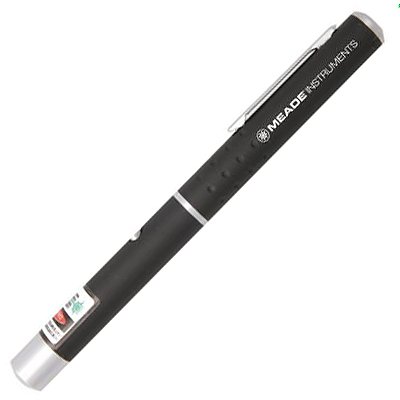
This star laser pointer comes with 2 AAA batteries that are easy to replace. It has a wavelength of 532 nm and a maximum range of 25000 feet.
Unlike other models, it does not appear to be water-resistant or shock-resistant, so we handled it more carefully. It has a soft, rubberized grip, which made it easy to hold and use for longer periods of time.
What we liked
- Good value for money
- Soft rubberized grip
- 4 to 6 hour battery life
- Great star gazing laser pointer
- Comes with a storage box
- Suitable for low light use
- Uses standard AAA batteries, easily replaceable
What we didn’t like
- Not water-resistant
- Must hold the button down to use
- No bracket to attach to a telescope
Laser output: 5 mW
Color: Green
Weight: n/a
Wavelength: 532 nm
Maximum Range: 25000 feet
Battery: 4 to 6 hours
Features: Soft rubberized grip, good in low light
5. Z-Bolt Military Pride Green Laser Pointer
We loved this classy Z-Bolt Military sky laser pointer!
It comes in a stylish green color with a choice of 14 different US Army Division or Command shoulder sleeve insignias on the tube.
The look has an Army-style brass clip finish. The green astronomy laser comes in a satin-lined and felt-lined carry case.
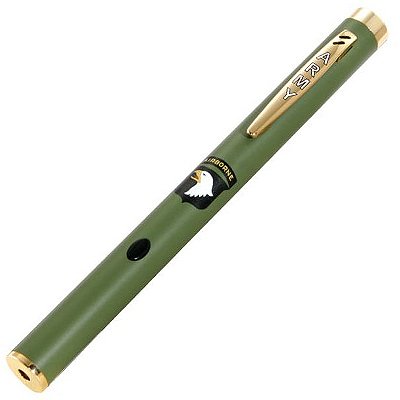
The kit includes a green nylon lanyard and a special accessory end cap with a lanyard loop ring. At a very reasonable price, these luxurious high power laser pointers make a great gift for any home astronomer and army fan.
The Z-Bolt Military Pride Green Laser Pointer has a wavelength of 532 nm and a maximum range of 5 miles. The green beam is perfect for beginner stargazers to accurately point to objects in the sky. We were happy to see that this brightest laser pointer has an IR filter for eye protection and additional safety.
The night sky laser pointer is easy to use with a hold-down thumb action for momentary push button activation. For longer use, it has a Double Tap that keeps it on without having to hold down the button.
What we liked
- Great price for a stylish device
- Army pride design with insignia on the tube
- Star gazer laser lights with army-style brass clip
- Comes in a satin-lined gift box
- High power green laser pointer, ideal for stargazers
- Push button for momentary activation
- Double Tap operation for constant on-mode
What we didn’t like
- Army style may not suit all users
- No bracket attachments
Laser output: 5 mW
Color: Green
Weight: n/a
Wavelength: 532 nm
Maximum Range: 5 miles
Battery: 6 hours
Features: Unique Army Pride design, double tap button for constant use
6. Beamshot Tactical GreenBeam Waterproof Laser Pointer
The Beamshot Tactical GreenBeam Waterproof Laser Pointer emits a green laser beam that is 20 times brighter than red laser devices.
It is the perfect green astronomy laser pointer for entry-level stargazers and comes at a very reasonable price.
This high powered laser pointer has an output of 5 mW and a wavelength of 532 nm.
It shines for a distance of 100m in the day and up to 1 mile in nighttime conditions.
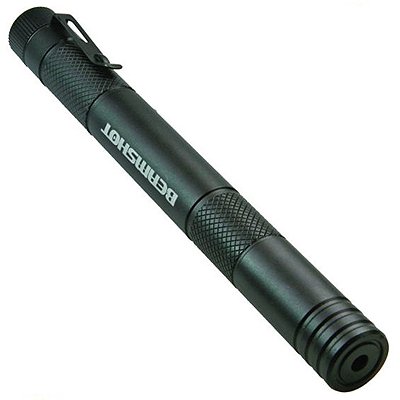
The device has a hard Aerospace-grade anodized finish, which is both water-resistant and shock-resistant.
We were keen to take it with us on an outing into more rugged viewing conditions. This longest range laser pointer is a handheld device with a button to press and hold when you want to use it. Some users may find this to be stressful on the fingers and may prefer a classic on/off switch.
These stargazing laser pointers come in a mini and a full size version. I enjoyed the mini version. As an astronomy laser pointer, it was light and easy to slip in with our other stargazing accessories.
What we liked
- Green astronomy laser pointers, ideal for stargazers
- 20 times brighter than red laser sights
- Visible in broad daylight
- Durable Aerospace-grade aluminum housing with hard anodized finish
- Shock resistant
- Waterproof up to 20-40 meters
- Easy to use
What we didn’t like
- Button must be held down while in use
- No bracket for mounting
Laser output: 5 mW
Color: Green
Weight: 5.22oz
Wavelength: 532 nm
Maximum Range: 1 mile night time, 100m day time
Battery: 6 hours
Features: Water-resistant, shock-resistant, very durable
7. Beamshot GreenBeam 100 Heavy Duty Tactical Laser Pointer
One of the problems with night-time stargazing is moisture that tends to accumulate on your devices, rendering them unusable.
We found this to be a problem with some of the laser pointers that we reviewed.
The next astronomical laser pointer that we reviewed was the Beamshot GreenBeam 100 Heavy Duty Handheld Tactical Laser Pointer, and it did not have this problem.
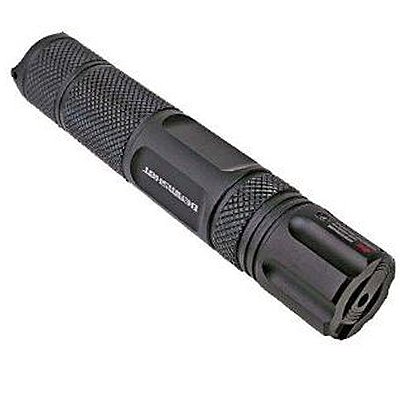
It features a heavy-duty design that makes it look mean and ready for business. My teens especially enjoyed the look of this strong laser pointer.
This laser star pointer has an output of 5 mW and a wavelength of 532 nm. The range is 1 mile for night time and 100m for day time use.
Weighing in at 5.75oz, it is slightly heavier than other models, but still light enough to carry without any issues.
What we liked
- Green long distance laser pointer ideal for stargazers
- 20 times brighter than red laser sights
- Visible in broad daylight
- Strongest handheld laser with durable Aerospace-grade aluminum housing
- Shock-resistant
- Water-resistant
- Easy to use green astronomical lase
What we didn’t like
- Button must be held down while in use
- No bracket for mounting
Laser output: 5 mW
Color: Green
Weight: 5.75oz
Wavelength: 532 nm
Maximum Range: 1 mile night time, 100m day time
Battery: 4 hours
Features: Heavy duty design, water-resistant, shock-resistant
8. Marathon Watch Dual Red and Green Laser Pointer
Marathon Watch Dual is a powerful laser pointer has the option of either a red or green laser light.
It was interesting to see how the different colors responded. But, we are still sold on the green option.
This model has a middle-range price and offers a great pen laser pointer for beginner stargazers to add to their accessories collection.
It comes with a handy pocket clip and operates with a momentary button.
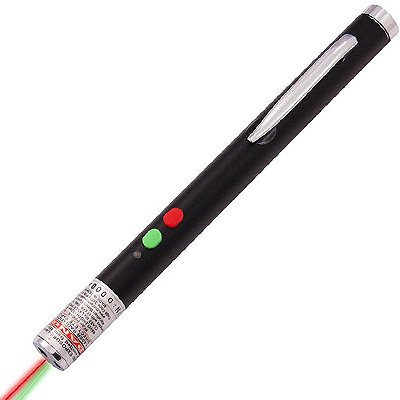
This means that you press and hold the button down for use. Some people do prefer a more classic on/off switch, which is easier on the fingers.
The Marathon Watch Dual Red and Green Laser Pointer is an ideal laser pointer for stargazing.
It has a 532nm wavelength, a 5 mW laser output, and a maximum range of 9000 feet. It uses 2 easily replaceable AAA batteries. I enjoyed the stylish look of the black colored barrel on this stargazer laser light.
What we liked
- Dual option of red and green laser beam
- Stylish brass black barrel on these 5mw green lasers
- Uses 2 AAA batteries, easily replaceable
- 9000 feet maximum range
- Handy pocket clip
- Light and easy to use
- Users were very satisfied with this best green laser pointer astronomy
What we didn’t like
- Button must be held down while in use
- No bracket for mounting
Laser output: 5 mW
Color: Green and red
Weight: n/a
Wavelength: 532 nm
Maximum Range: 9000 feet
Battery: 6 hours
Features: Red and green beam, easy to use
9. Z-Bolt Red Dot Tactical Laser Designator
After reviewing a green laser pointer for astronomy, we decided to try out a red beam for comparison.
Red beams have a shorter range than green beams, but we were still impressed with the accuracy and power of the Z-Bolt Red Dot Tactical Laser Designator.
Most impressive is the amazing 40-hour battery run time, far ahead of any other devices we used, which average 4-6 hours.
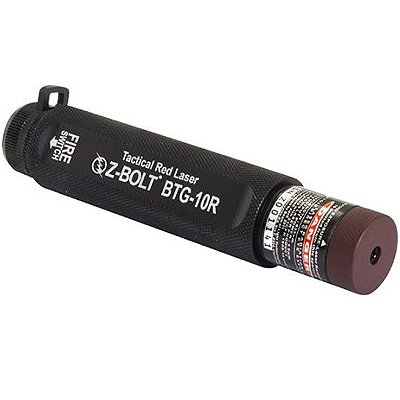
This model is powered by 2 CR123A Lithium Batteries. It has a 5 mW laser output, a 4500 feet maximum range, and a wavelength of 635 nm.
The tube casing is 1” knurled for a non-slip and steadfast grip. It can attach to any standard 1” light mount, a bonus for hands-free use.
The design is sturdy and durable, and it is both water-resistant and impact-resistant. Weighing only 4oz, it is one of the lighter and brightest laser pointers that we reviewed. It also comes with a user guide and a handy pouch for carrying and storing.
What we liked
- 40 hour battery
- Water-resistant
- Shock-resistant
- Will attach to a 1” mount
- Power lockout functionality
- 1″ knurled tube with lanyard loop
- Great laser pointer for astronomy
What we didn’t like
- Slightly higher price
- Red beam has shorter distance
- Some users prefer a green beam for celestial objects
Laser output: 5 mW
Color: Red
Weight: 4 oz
Wavelength: 635 nm
Maximum Range: 4500 feet
Battery: 40 hours
Features: Red beam, long 40 battery life
10. Beamshot Handheld Tactical Green Laser Pointer
The BEAMSHOT Laser is one of the handheld astronomy lasers that have a bulkier design than others we reviewed.
It is, however, very light and easy to use. It is made from a strong and durable Aircraft Grade Aluminum with a hard-anodized finish.
The beam has green star power laser lights, which are 20 times brighter than red laser pointers.
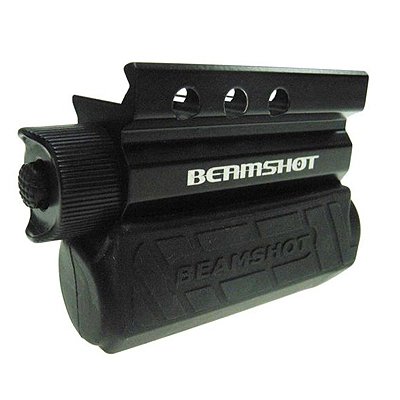
Although this powerful laser is more suitable for military use, we did use it to point out constellations in the night sky with ease. It is a great laser pointer for stars. Trying to use a finger to point into the sky just doesn’t work and makes the younger children frustrated.
These green astronomy lasers have a 1 mW output, a 532 nm wavelength, and a maximum range of 1 mile at night and 100m during the day. The battery gives 4-6 hours of use.
What we did notice was the exceptional quality of the glass laser lens that produced better beam focus and far more accurate target acquisition. This is one of the best laser pointers for astronomy.
What we liked
- Green Beam
- Exceptional glass laser lens produces better beam focus
- Light weight compact design
- Shock-resistant
- Water-resistant
- Very light
- Great star gazing laser for intermediates
What we didn’t like
- Bulkier than other models
- Not ideal for beginners, best used as a military grade laser pointer
- Somewhat short battery life
Laser output: 1 mW
Color: Green
Weight: 3 oz
Wavelength: 532 nm
Maximum Range: 1 mile
Battery: 4-6 hours
Features: Quality glass lens, durable design
Laser pointer colors
You may ask yourself, “What color laser pointer is the strongest?” Well, the green laser pointer color is the best color for laser pointers, as it is the brightest. However, the blue variant is more powerful in terms of burning power. So let’s take a look at the options available:
Red
These are the simplest lasers. It is powered by nothing more than a battery-powered laser diode. Modern red lasers DPSS can emit 671 nm. They started the whole laser phenomenon, but with the emergence of new technology, they lost ground.
Green
This variant is now the top. Most stargazers use green laser pointers. They are far brighter than red lasers, typically operating at 532 nm. They are visible from thousands of feet in optimal conditions. If you move beyond 4mW, they are very powerful.
Blue
These are also popular lasers. They operate in Blu-ray video technology. They actually operate using a violet laser. In the visible spectrum, they reach at 405 nm. They usually have the strongest burning power out of all the lasers, but the green ones remain the brightest.
Yellow
These lasers actually existed for quite a while. They sometimes reach around 593.5 nm in the visible spectrum. These lasers are usually quite expensive and the biggest problem with them as they don’t emit a steady beam for long periods of time.
Related: 5 Best Telescope Eyepieces in 2020 [+Beginner’s Guide]
Are laser pointers illegal?
Since lasers became more powerful, people began to use them irresponsibly. Some even went to jail and yes, it is illegal to point a laser at any vehicle (1).
One of the most notorious cases happened in 2005. A man allegedly pointed his green laser at a plane that was landing on the airport. He faced a possible 20-year jail term but was ultimately sentenced to two years of probation.
In 2009, around 1,489 cases were reported. The following year, the number doubled at around 2,836 incidents. Because of this, regulations have been implemented and they usually differ from country to country. But here are some things you need to know:
- Lasers can cause permanent eye damage or temporal blindness that can lead to serious accidents. You should use lasers responsibly (2).
- It is illegal to point a laser at a member of law enforcement you can get shot, and interfering with the operation of an aircraft by pointing your laser beam at it, is a crime.
- The U.S. limit for a laser to be sold as a pointer is 5 mW. It is illegal to brand a laser as a pointer if it has beyond 5 mW power. It is not illegal to own a 5+ mW laser (3).
- The FDA recognizes four major hazard classes of lasers, including three subclasses (IIa, IIIa, and IIIb) the higher the class, the greater the potential to pose serious injury if used improperly.
Related: 5 Best Star Projectors in 2020 [for Home Planetarium]
Laser pointer power
Green lasers that have 532 nm are usually 5 to 7 times brighter than any laser of the same power (4). So as a general rule, green lasers are much more powerful at any frequency. The wavelength of laser pointers is measured in nanometers (nm) within a visible range of 400-700 nm. Peak visibility for the human eye is 555.
The power output is measured in milliwatts (mW). Lasers are broken into three classes based on this: Class I operates at half a mW; Class II is safe up to 1 mW, Class IIIa at 5 mW while class IIIb reaches up to 500 mW (5). Now that this is out of the way, here is what you should look for:
- For stargazing applications, a 5-mW green laser is completely adequate. You can opt for even more powerful ones, but generally, this is the minimum, so to say.
- Based on the power of mW, a laser is broken into different classes that have different risks or advantages. The best class for stargazing is IIIa, while the most dangerous is IV.
- For presentations, teachings, or even playing with a pet, lasers under the class IIIa are the best category and safest since they are below 5 mW.
- Blue lasers over 1,000mW are best suited for burning ability if a laser doesn’t have a class category, you shouldn’t purchase it.
Astronomy laser pointer etiquette
Lasers sometimes use frequency shifting crystals to achieve a visible color. This makes the internal IR laser much more powerful than the beam that is output. This means that a high power invisible laser is sitting inside the pointer – a potentially very dangerous item (6). You should never attempt to dismantle it. With that being said, here are some tips on what to do and what not to do with a laser:
- Never point the laser at anyone also at metal objects, airplanes, etc. Reflective objects may be present and the beam can hit you or someone else back. This can damage the eyes.
- Never look directly into the beam of a laser pointer. You should not aim a laser in the direction of anyone using a telescope or binoculars for either astronomical or terrestrial viewing.
- In some countries, it is illegal to use a laser pointer within 3 kilometers / 2 miles of an airport (7). Airplanes are very difficult to land and an unforeseen light can cause confusion, even accidents.
- Never hand out your laser to a child. They won’t be familiar with its safe use. You should never give your laser to someone inexperienced with it, especially in the dark.
- Lasers can be an eye hazard to pets and wildlife. They can also stress a pet that can never “catch” the light (7). Of course, you can use the laser to scare off birds that may damage crops.
How to choose the right astronomy laser pointer?
Here are a couple of things to take into consideration when purchasing a laser pointer:
Color
The green laser pointer is the best for astronomy (9), due to their brightness. For example, a 100mW green laser will literally be 5-7x brighter than a red or purple laser pointer of 100mW. The color green, in general, is one of the most visible colors in general.
Power
The wavelength should be 532nm, while the output power 5 mW. Only Class IIIa can reach this power and might be the best option for a laser. The IIIb class reaches up to 500 mW, but that’s just too powerful and dangerous. When it comes to blue lasers, a wavelength of 445 nm and 500 mW is considered high-end.
Temperature
Lasers tend to operate best at temperatures around 20C+. If you want to operate one at cold temperatures, red solid-state lasers might be a good option. Most lasers come with a manual and indication of what temperatures they can handle.
Laser type and brightness
5 mW is considered the best since it is also too weak to reach aircraft. Handheld lasers are good for teaching purposes, while lasers that can be attached might be the better option for telescopes because of stability.
Frequently asked questions
What is the best laser pointer for astronomy?
A great green laser pointer for stargazing is the Z-Bolt Green Dot Laser Pointer Designator. It has a strong green beam with a range of 5 miles. It is also water-resistant and shock-resistant.
Can you point lasers in the sky?
Yes, you can point lasers in the sky. By using an astronomy green laser pointer, you can accurately point to a star, planet, or constellation and easily show other viewers what you are referring to.
What color is the most powerful laser?
A green color is the most powerful color for a laser pointer. Best green laser pointers are up to 20 times more powerful than those with red beams.
Is 5mW laser powerful?
Most powerful laser pointers have a power of 5 mW. This is a high power laser pointer, strong enough to point to stars, planets, and constellations and is perfect for home stargazers.
Can a laser pointer reach the moon?
A green laser star pointer can reach the moon, However, the light from these star pointers laser would be so diffuse that it would barely be visible.
Why are blue lasers illegal?
Blue lasers are illegal because they can interfere with aircraft and vehicles. Blue lasers are exceptionally strong and can damage the retina if pointed at someone’s eye.
What is the strongest laser you can buy?
Laws vary from country to country, but in general, the strongest laser pointer you can buy for personal use is one with a 5 mW output. This size laser for astronomy is ideal for pointing to sky objects. 5 mW is the strongest laser you can legally own.
How far can a green laser go?
The Z-Bolt Green Dot Laser Pointer Designator can go as far as 5 miles. Most best laser pointer for stargazing have a range of around 1 mile in night-time conditions. Read our astronomy laser pointer reviews to get the details of each device.
Also read:


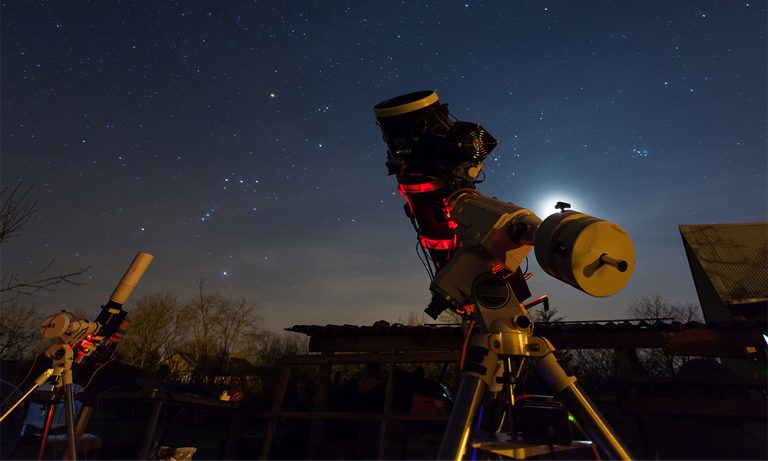
![5 Best Star Trackers for DSLR in 2024 [Buyer’s Guide]](https://www.planetguide.net/wp-content/uploads/2019/12/motorized-telescope-768x461.jpg)
![5 Best Telescopes for Astrophotography in 2024 [+Mount]](https://www.planetguide.net/wp-content/uploads/2019/12/Depositphotos_95116882_l-2015-768x480.jpg)